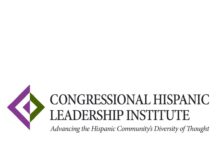WASHINGTON, Aug. 25, 2020 /PRNewswire-HISPANIC PR WIRE/ — Today, the National Alliance for Public Charter Schools released a report conducted by Public Impact, Learning in Real Time: How Charter Schools Serve Students During COVID-19 Closures, that compares how charter schools and district schools served students during COVID-19 closures. While a lot has been written about the response of larger charter school networks, this report takes a closer look at how the typical single site school or small charter network responded to COVID-19.
The research showed that on average, when compared to districts, charter schools had stronger expectations for teachers to provide direct instruction, provide real-time instruction, and to check in with students and families. They also monitored student attendance more closely than their district counterparts. Charter schools were equally as likely to require the distribution of devices for online learning, however they appeared less likely to provide home or community internet hotspots.
“As we rethink basic functions in our lives right now – like how we shop for groceries, work, and socialize – the best way to educate our students is the greatest challenge of all. Within the K-12 community, there are a handful of examples that stand out for their outstanding performance and adaptability during the pandemic: charter schools are one of them,” said Nina Rees, president and CEO of the National Alliance for Public Charter Schools. “This report confirms what we have said all along. Charter schools are innovative public schools that are student-centered, and their autonomous and flexible model empowers them to meet the unique needs of their students. We hope today’s report is a critical reminder to Congress, and to everyone else, that we need more charter schools, more equitable funding for all public schools, and more federal relief for K-12 education so that all students can be equipped for distance learning.”
In a recent poll by Morning Consult, 54 percent of respondents said public education is a top tier issue. Unfortunately, it is not getting the attention it deserves. Eighty-one percent of respondents believed a student’s neighborhood and family income impacts the likelihood of their success – a challenge charter schools, which are zone-free, tuition-free public schools, can address.
The report examined a nationally representative sample of 356 charter schools. The analysis focused on eight indicators that allowed national comparisons between charter schools and district schools: feedback on student work, formal grading, teacher check-in, operator delegated distance learning, attendance tracking, instructional minutes recommended, device distribution, and hotspot access.
In addition to the data analysis, the report profiles charter schools that shifted operations to maintain student-school connections and center on student support. The five trends across all the schools were: prioritizing relationships and outreach, expanding the role of the school, continuing academic learning, adapting how learning happens, and implementing a feedback loop. The report profiles a geographically and racially diverse group of schools, including stories from communities in New York and Washington state that were at the epicenter of the COVID-19 infection, as well as schools in other communities across the country.
SOURCE National Alliance for Public Charter Schools





